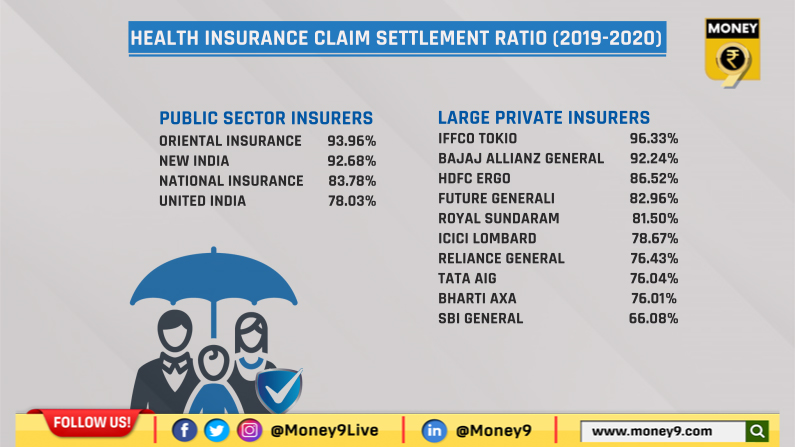Avoid these common mistakes while buying health insurance polices
- Teena Jain Kaushal
- Last Updated : April 5, 2021, 18:53 IST

Following the uncertainty due to the global pandemic which induced economic slowdown and subsequent job losses, health insurance has become a critical aspect of one’s portfolio. The pandemic has brought huge awareness among the masses about the benefits of a health cover not only in tiding over short-term medical expenses, but also to save their hard-earned money for rainy days. But in the hurry to buy health insurance we often make common mistakes that can prove costly at the time of making a claim. Here are some of the common mistakes you should avoid while buying a health insurance policy:
Inadequate Cover
Most of us do not consider buying individual health insurance thinking group insurance will be sufficient at the time of need. This is one of the common mistakes as group insurance will not cover you between the jobs or after your retirement. It is therefore important to have an individual policy with sufficient coverage. The average cover is around Rs 3-5 lakh but considering that the cost of healthcare is increasing it is important to take cover for a higher sum.
For instance, out of the total health insurance policies sold on PolicyBazaar website, 35% is for the policies with a sum insured of 5 lakh and 11% is with 10 lakh cover. The share for Rs 1 crore cover stands at 15%. Amit Chhabra, Head-Health Insurance, Policybazaar.com, said, “The year 2020 was like none other. It was a year that not only saw a small virus change the world that we live in but also changed our perceptions about the importance and need for health insurance. During the pandemic, hospitals bills went up to Rs 25 lakh and people with a lower heath cover were helpless. To address these concerns, there are several Rs 1 crore health insurance plans available in the market at a very nominal price those of which provide overall comprehensive coverage to the customers.”
Claim Ratio
Insurance Regulatory and Development Authority of India (IRDAI) had recently put out data on claims which shows that IFFCO Tokio General Insurance has the highest claim ratio at 96.33%. Among public sector insurers Oriental Insurance has the highest ratio at 93.96% followed by New India, National Insurance and United India at 92.68%, 83.78% and 78.03%, respectively. Bajaj Allianz is the second-highest among private insures at 92.24%.
While claim ratio is one of the important criteria before buying a health insurance policy, experts say that young companies tend to have a higher claim ratio because of the smaller base. Also, it has been noticed in the past that fraud claims usually tend to be higher in new companies compared with the older payers.
According to IRDA annual report, “During 2019-20, general and health insurers settled 1.67 crore health insurance claims and paid Rs 40,026 crore towards the settlement of health insurance claims. The average amount paid per claim was Rs 23,866. In terms of a number of claims settled, 70% of the claims were settled through TPAs and the balance 30% of the claims were settled through the in-house mechanism.”

Claim ratio of health insurers
Not sharing medical history
One of the reasons for the rejection of claims is not declaring your medical history. It is often seen that people don’t share pre-existing illnesses fearing it might lead to an increase in premium rates. This is one of the common mistakes as hiding your medical history can lead to the rejection of your claim when you need it the most. Therefore, while buying the policy next time do disclose pre-existing illnesses such as diabetes and hypertension so that any co-morbidities arising out of pre-existing illnesses remain covered. Having said that, the good news is from October 2020, a moratorium clause has been introduced across all policies, under which insurers cannot contest a claim eight years into a policy, barring cases of fraudulent claims.
Not Reading policy document
There are a plethora of health insurance policies. It looks like a cumbersome process to go through the terms and conditions of each policy before signing on one policy. However, from October 1, 2020, the terms and conditions, waiting periods and exclusions across health insurance policies have been standardised. Because of standardisation it will be easier for you to compare policies along with portability options. Another big step towards standardisation of policies was the launch of the Arogya Sanjeevani Policy in April 2020. The standard cover is offered by all insurers, which is ideal for base-level coverage. The standard policy with common nomenclature is easy to understand with common features and exclusions.
Having said that always read the policy documents carefully so that you are not in for surprises at the last moment. For example, many people don’t know that their policy might have a co-payment clause, where the insured is required to foot the fixed percentage of the hospital bill. Policyholders are generally taken by surprise and feel cheated at the time of paying bills because co-payment of around 20% can burn a hole in their pocket.
Tax Benefits
Most of us buy health insurance for tax benefits. This is not the right approach as we often overlook the amount of coverage required as well as avoid reading terms and conditions. The primary objective of buying health insurance should be to cover your family and tax benefit should be secondary. Last but not least, never pay the health insurance premium in cash as for availing tax benefits you need to pay in cheque or through online payment channels.
Download Money9 App for the latest updates on Personal Finance.
Related
- अब महज 15 दिनों में होगा डेथ क्लेम सेटलमेंट, IRDAI ने बीमा कंपनियों को दिए सख्त निर्देश
- Health insurance vs. Medical corpus: What’s your choice?
- Can Homebuyers Expect Tax Rebate from Budget’24?
- Budget 2024: Insurers anticipate tax reforms in health insurance
- Claim rejected even after completing Moratorium Period?
- Be Monsoon Ready with Home Insurance Damage Cover

